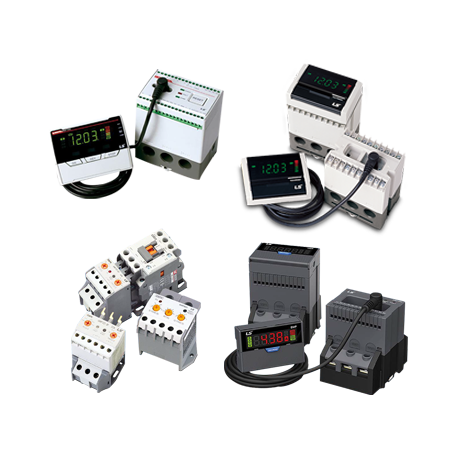This website uses cookies so that we can provide you with the best user experience possible. Cookie information is stored in your browser and performs functions such as recognising you when you return to our website and helping our team to understand which sections of the website you find most interesting and useful.
The new standard of next-generation motor protection relays! LS ELECTRIC electronic motor protection relay (EMPR) supersedes thermal overload relays, also known as electronic overcurrent relays, to safeguard low voltage motors. Because of its accuracy and real-time data processing, EMPR is extremely dependable. LEDs on EMPRs indicate system status, and features phase loss, phase reverse, unbalanced, stall, lock, ground fault and short circuit protection (depending on the model). fuu that display load current, save cause of failure, and provide communication features. EMPR are EMC tested and approved to operate safely without any malfunction caused by electromagnetic wave and surge.
Document downloads
Further information
General Motor Protection Relays – GMP Relay Series
- Various connection & mount
- Inverse or definite time protection mode
- Ground fault type
- Display the causes of the fault by LED
Intelligent Digital Motor Protection Relays – DMPi Relay Series
- Ampere meter, load rate and the causes of fault Display
- Standard, Ground fault and short circuit protection type
- Select the Inverse or definite time protection mode
- MODBUS communication, 4~20mA DC output
Intelligent Motor Protection Relays – IMP Relay Series
- Wide current setting range (0.125~100A)
- Communication support type (MODBUS. Analog)
- Zero current and residual current sensing
- Save the fault events and operating time setup
- Select the Inverse, thermal inverse or definite time modes
- Unit or Extension in one body by option cable
Smart Electronic Motor Protection Relays – MMP Relay Series
- Current, Voltage, Power Measurement and Power Factor Protection
- Instantaneous interruption compensation and restarting
- Harmonic measurement (1st to 16th)
- Modbus communication and 4~20mA
Intelligent Motor Controller – IMC-III
- 1 model can be used on various motor start methods
- Wide range of protection functions
- Variety of remote surveillance control functions according to the sequence structure

